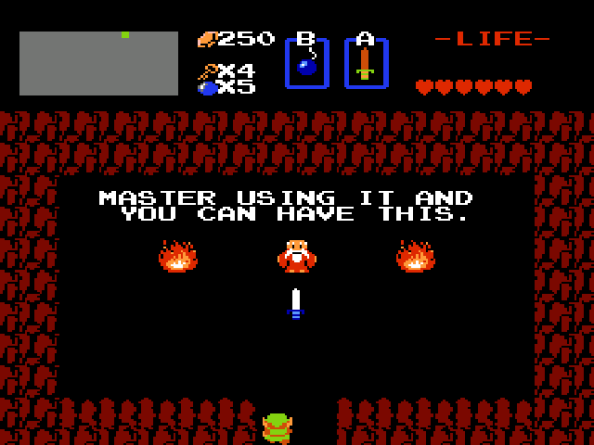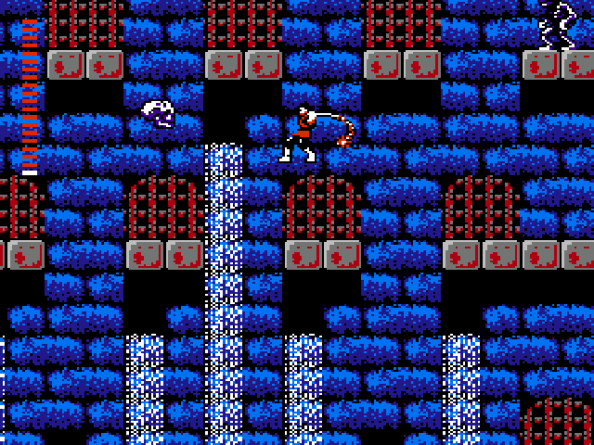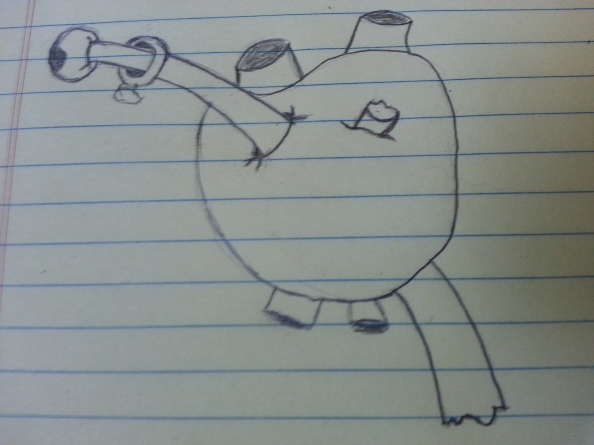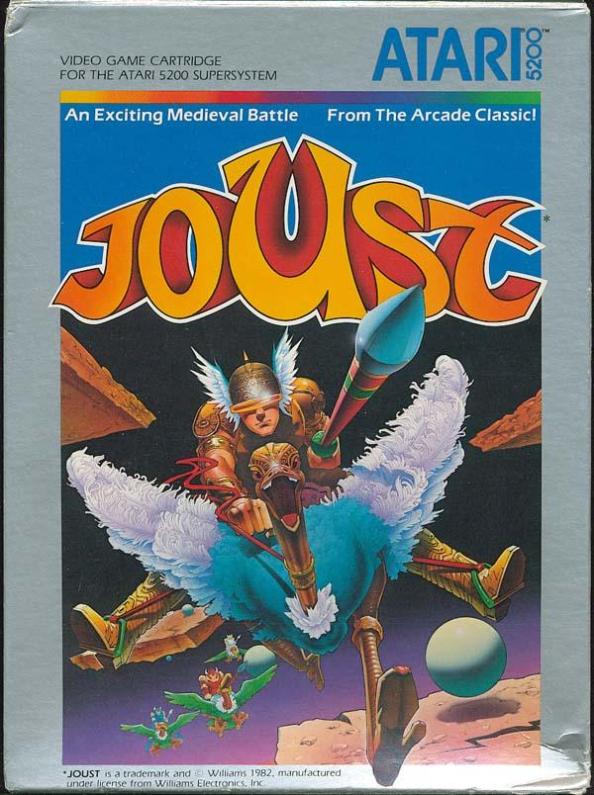
Let me hold it up to the light here…what, did you make this yourself? You really want to send me off to rescue your wrinkly ass with…what is this? Balsa wood? Yeah, some great hero of Hyrule I’ll be. “He could have saved everyone if it weren’t for that nest of termites.”
“Is he actually going to do it?” you ask. “Is he going to take pot shots at the Legend of Zelda?”
Yes, fictional reader who asked a question no one was thinking so that I could begin this entry the way I wanted. Yes I am.
But let’s face it, while the game is the orgasm in the orgy of fantasy, adventure, catchy music, and 8-bit eye candy, but to pretend that Nintendo ironed out all the flaws and created the paradigm of video games with only a 64kb cartridge is like saying a four-year-old scribbling out the alphabet has a literary prowess to rival Tolkien.

Whoah, Ganon, dude…you gotta get out more. Lift a few weights. Cut back on the like-like steaks. I almost feel bad fighting you in that shape.
As usual, though, let’s start with the story. The Kingdom of Hyrule keeps a powerful source of magic, the Triforce of the Gods (or the Triforce of the Nintendo of America Secular Censorship Authority, depending on whether you’re American or Japanese). However, this is like eating in bed, and the crumbs of magic tend to attract vicious monsters, evil wizards, giant pig demons, and republicans to the kingdom. Currently, the demon king Ganon has seized command of the kingdom (despite losing the popular vote), the Triforce of Power, and in true villain fashion, Princess Zelda (we’ll not ask how he seized her). However, before her capture, Zelda decided to desecrate a sacred artifact—for its own good, mind you—and scatter the pieces of the Triforce of Wisdom around Hyrule. Furthermore, she put out a hit on Ganon and sent her servant, Impa, to track down the perfect assassin.

Tink? Is that you? Come a little closer…there’s something really interesting in this bottle…
But Impa, being old enough to remember when the alphabet first came out, had a bit of a senior moment and came back with Link, an unarmed, prepubescent elf dressed like Peter Pan. Link, who apparently thinks he’s going to fight like Goofy from Kingdom Hearts, sets out with naught but his shield. His quest: wrest the hidden Triforce pieces away from Ganon’s goons and take them to the demon king himself to do battle. Wow. Where do I begin with that one? First, Zelda darling, your heart’s in the right place, but next time consider burying them in unmarked locations rather than hiding them in your enemy’s living room. Second, Ganon, I know you authoritarian types generally regard education with as much fondness as the scent of a burning skunk, but if it never occurred to you or your underlings to, you know, put the Triforce back together on your own, you may want to raise the standards on your help wanted ads. After all, it takes more than a few extra chromosomes to think that the hero would assemble it for you and waltz right into your office with it.

What kind of fantasy world is this where I still need a prescription and a part-time job as an exterminator just to get medicine? I’m going to rescue Zelda, not roofie her!
So Link isn’t the sharpest edge on the sword (or judging by those tights, the straightest arrow in the quiver), but he gets the job done, much to the chagrin of the Hylian populace who, despite being forced to live in caves while packs of wild octopi devour people just beyond their threshold, seem to take every action possible to bolster the status quo of their predicament. They lure him into their casinos to take his cash, outright extort repair fees from him to maintain their shoddy housing, gouge prices on vital necessities, force him to obtain a reference letter before providing him with emergency healthcare, and refuse to give him the means to defend himself until he jumps through pointless hoops. But on the plus side, at least there are no background checks or five-day waiting periods. I guess, though, that dealing with an uneducated, right-wing group of victims is what separates true heroes from people applying for Canadian visas.

…let me guess, the Democrats are in charge again. Don’t you know that the only thing that stops a bad guy with a sword is a good guy with a sword?
So by now, those of you who haven’t actually played the game are probably either confused about what I’m talking about or pissed off that I’ve just forced you to read three paragraphs of political satire veiled so thin that it could be sent home from school for violating the dress code. I promise that one of these days (preferably when national diplomacy no longer resembles poorly-scripted WWE smack-talk) I’ll go back and write a straight entry on this game. But for now, let’s talk about early sandbox games.
Most fans probably know the series through either Ocarina of Time or games that came out afterwards. These games and I have quite a bit in common—completely straight, even though no one seems to know just by looking at it. The original game is notably different in that right from the opening, the player has access to most dungeons and all but two of the grid squares on the map. In addition, you can collect items in whatever order you’d like, providing you can collect the cash to buy them or that you have the prerequisite items to obtain others. The result of this is a remarkable freedom as to how you play the game. We’re talking the type of freedom that makes Mel Gibson characters get teary-eyed. The type of freedom that George Bush wishes he could force upon the Middle East (sorry, but just try making a joke about freedom that doesn’t involve one or the other!)

No, dude, this’ll totally work. I saw a cartoon rabbit do it on TV.
Like every other Zelda game, Link collects tools to help him, except instead of following the using-the-tool-to-beat-the-dungeon-it’s-found-in routine, most items just make regular tasks a little easier. Items range from the vital (swords, shield and bombs) to the mostly useless (raft, bow and arrows) to the completely worthless (red candle, wand, skeleton key), and the more difficult the dungeon is, the more likely you are to put the item you found there in a $1 bin at your next yard sale. So while the 1 to 2 hour game gives you several paths to choose from, those paths tend to lead to your choice of Detroit, Rio de Janeiro, Pyongyang, or Disney World.
Fortunately, for those of us who can’t quite strut around AGDQ with a girl on each arm like we’re the Jackie Chan of Zelda, there’s an intermediate option. For any player who finishes the game—or more likely had a friend on the playground who told them to name their save file ZELDA—the cartridge holds a second quest, with entirely new dungeons, a partly rearranged overworld map, new obstacles, more challenging bosses, and a red bubble enemy that might only be defeated by a prescription for sedatives and blood pressure medication. Oddly enough, I never played the second quest much when I was younger, so I found it more challenging than juggling hedgehogs. Dungeon layouts are confusing in part due to invisible doors, some of which work only one way, so between the doors and the onslaught of monsters I usually wound up feeling my way through the dungeon like a drunken roomba with an inner ear infection.

It’s a good thing that Hylians don’t speak in cryptic riddles or this might be really hard to figure out.
Unfortunately I don’t have a playground full of kids to help me figure out the secrets of the second quest, but I do have the Internet, and I’m not ashamed to use it. Not only because Shigeru Miyamoto specifically wanted players to share information, but because otherwise the only way to find anything is to play the game like a Verizon commercial with bombs.






































